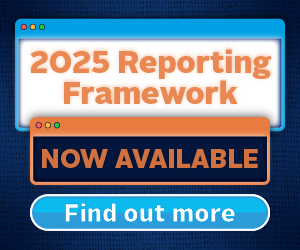All Stewardship articles – Page 11
-
 Case study
Case studyPRI Awards 2019 case study: Platform Living Wage Financials
Company: MN (on behalf of the PLWF) HQ: Netherlands Category: Active Ownership Project of the Year (winner)
-
 Case study
Case studyPRI Awards 2019 case study: Cadmos Peace Investment Fund
Company: de Pury Pictet Turrettini (PPT) HQ: Switzerland Category: Active Ownership Project of the Year (shortlisted)
-
 Discussion paper
Discussion paperHow can a passive investor be a responsible investor?
Passive funds and responsible investment have been two of the key themes in asset management over the last 10 years.
-
 Blog post
Blog postVale dam collapse reignites mining safety pressure from investors
By Elena Espinoza, Manager, Social Issues, the PRI
-
 DDQ
DDQResponsible investment DDQ for forestry investors
This responsible investment due diligence questionnaire (DDQ) has been developed to help investors appraising potential forestry investment managers to evaluate how a manager handles environmental, social and governance (ESG) factors.
-
 DDQ
DDQResponsible investment DDQ for farmland investors
This responsible investment due diligence questionnaire (DDQ) has been developed to help investors appraising potential farmland investment managers to evaluate how a manager handles environmental, social and governance (ESG) factors.
-
Technical guide
Implementing the TCFD recommendations for oil and gas methane disclosure: introduction
Investors broadly recognize climate change as a material risk and opportunity for their portfolios and expect company disclosure commensurate with that fact.
-
Technical guide
Implementing the TCFD recommendations for oil and gas methane disclosure: focus on strategy
Methane management is a key strategic challenge for oil and gas companies (See Table 1). Investors will read the strategy section of a TCFD report to understand how methane-related risks and opportunities impact its business, and how met hane mitigation is integrated into the company’s shortand long-term strategies.
-
Technical guide
Implementing the TCFD recommendations for oil and gas methane disclosure: focus on risk management
The risk management section of the TCFD focuses on the processes a company has in place to ident ify, assess, prioritize and mitigate climate-related risks.
-
Technical guide
Implementing the TCFD recommendations for oil and gas methane disclosure: focus on metrics and targets
The last part of the TCFD’s four-part framework focuses on the metrics and targets companies use to assess and manage material climate-related risks and opportunities.
-
Technical guide
Implementing the TCFD recommendations for oil and gas methane disclosure: illustrative implementation
The table below is an il lustrative roadmap of implementation phases for the previous recommendations. The outline is a suggestion, with recognition that each company is on an ind ividual disclosure journey, with varying levels of existing reporting and resources. Adapted from TCFD Secretariat presentation “Beginning the Journey” March 2018.
-
Technical guide
Implementing the TCFD recommendations for oil and gas methane disclosure: summary
The mission of the TCFD is to “help companies understand what financial markets want from disclosure in order to measure and respond to climate change risks and encourage firms to align their disclosure with investor needs.”
-
 Technical guide
Technical guideImplementing TCFD recommendations for oil and gas methane disclosure
The Task Force on Climate-Related Financial Disclosure (TCFD or the Task Force) published its final recommendations in 2017, and now both companies and investors are moving towards implementation of TCFD’s recommendations.
-
 DDQ
DDQResponsible investment DDQ for infrastructure investors
In order to encourage a globally consistent approach to infrastructure investor due diligence and ESG disclosure by infrastructure managers, the PRI launched the Infrastructure Investor Responsible Investment Due Diligence Questionnaire.
-
 Podcast
PodcastHow investors can promote health and well-being in the workplace
Wolf Kirsten (Global Centre for Healthy Workplaces) joins the PRI’s Bettina Reinboth to discuss the role investors can play to promote workplace health and well-being. They explore the relationship between corporate good practices in promoting health and well-being and financial performance, and the indicators investors can use to assess companies’ ...
-
Engagement guide
Corporate disclosure on cyber security governance: key takeaways
While companies generally perceived cyber security as a key organisational risk, very few communicated that they have policies, governance structures and processes that were effective at tackling cyber threats.
-
Engagement guide
Human rights and the extractives sector
There are different impacts on human rights along different phases of the value chain – exploration, operation and production – which are important to take into consideration when engaging.
-
Engagement guide
Summary of PRI-coordinated engagement on human rights in the extractives sector
From 2015 – 2017, 51 PRI signatories representing USD $7.3 trillion in assets engaged with 32 companies in the extractives sector.
-
 Engagement guide
Engagement guideEngaging with extractives companies: five key insights
Moving the laggards, the middle and the leaders Rooted in a risk-based approach, investors tend to focus on portfolio companies that have a poor human rights approach and performance. However, it was highlighted in engagement dialogues that investors should consult not only with laggards but also the ...
-
Engagement guide
How did companies in the human rights and extractives engagement respond to human rights incidents?
High-level trends Half of the companies evaluated now report on the way they respond to human rights allegations. While companies from developed markets have slightly progressed, companies from emerging countries have stalled – with the same 14% disclosing on this area as in 2015. What ...



